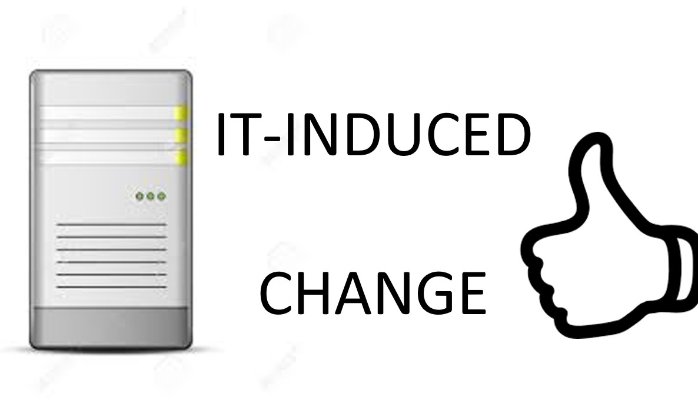Recently, I was referred by my former boss for a role with a client – a manufacturer and a top-3 company in their market niche. The client was having some trouble with an ongoing ERP project. After some discussions with the client, it was clear that the majority of their problems could be traced to poor change management practices. It has been shown through research that change management is so often neglected in IT-induced change projects. In fact, about 70% of IT-induced change projects fail and this is largely due to soft issues like poor change management.
So, what is it about change and where does it go wrong for IT-Induced change projects? The fact is that proposed change is not always understood by the recipients; they may have diverging interpretations of the change and are usually not willing to accept it. They would often prefer to remain in their old practices, doing the same things that they are used to doing. Furthermore, change is hard, it requires un-learning the old and learning the new (and more often, imposed) way of doing things.
Where business executives get it wrong is in their view of IT. They usually adopt a simplistic view that IT is an ordinary tool that can be detached from, attached and re-attached at will into organisational processes and practices. Most executives have a poor conception of IT which leads them to believe that they can change an old, problematic (but familiar) Information System by simply signing a contract with an implementation partner who deploys the system, switches it on, and they are good to go. They forget the importance of ensuring that all parts of the business accepts the change, cooperates and collaborates in the transformation throughout the life-cycle of the project until after it is fully operational and institutionalised.
Getting IT-induced change right involves an understanding of these daily project activities which need to take place in order to bring about that intended change. A useful way of looking at them is through the lens of the “Commonality Framework for IT-Enabled Change” by Einar Iveroth. Change activities can be categorised under 4 dimensions: common ground, common meaning, common interest and common behaviour. The greater the success achieved in each dimension, the more likely that the change efforts will succeed.
Firstly, change agents must think about achieving common ground for the change initiative. This is represented by the common language and shared syntax; popular practices for information transmission and documentation; communication culture and structure that are used to transmit the change message. Change agents must ensure that they “speak the same language” as the rest of the business and have the same basic understanding of the individual change item(s).
Next, the change agents must seek to achieve common meaning. At this level, the change is more complex, affecting different aspects of the business and meaning different things to different people. The new system to be implemented may have inconsistent interpretations across the business and the change agent needs to harmonize those interpretations to ensure the change initiative doesn’t follow different directions. In this case, social interactions are key to creating a common meaning. For example, change agents can create shared meaning for the change initiative by direct teaching and by explanations, local conferences, workshops, etc.
Once there is a common understanding of the implication of the change, change agents must seek to achieve a higher level of commonality – called common interest where the different parties affected by the change have aligned interests in making the IT-induced change a success. To bring this about, change agents need to adopt political, supportive and negotiator skills to sway the change recipients into buying into the change. This will involve building informal relationships with them, appealing to their emotions and motivating them.
The final level of change – common behaviour change, instils the implemented information system in the cultural practices of the organisation. At this level, the change must be observed, measured, and monitored using performance measurements and indicators. Change agents need to determine that there is alignment between the actual activities performed by the IT users and the expected use of the new information system. Also, they will need to act accordingly where the expectations and KPIs for the new system are not being met.
In summary, common ground and common behaviour change often gives an indication of the activities related to the hard aspect of the change process. For example, to achieve common ground, a shared language, syntax and common communication tools and practices are essential; while to achieve common behaviour, KPIs and various performance measures must be monitored. For the soft aspect, in order to bring about common meaning and common interest, change agents need to deploy social and political skills to influence the change recipients.
The success of a major IT-induced change can be helped by viewing the change process through the dimensions or levels of change complexity described here and distilling down to project activities that link to each level. Getting IT-Induced change right involves keeping in mind, the goal of achieving a favourable degree of commonality at each level of change complexity, defining the activities that support that goal and diligently performing them.
Fortune is an IT consultant with interests in IT Project and Change Management consulting. He holds an MSc. In IT, Mgt. and Organisational Change from Lancaster University.



